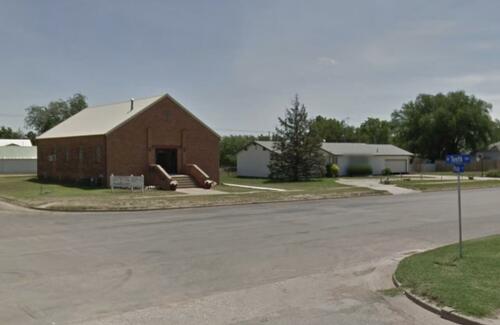Meet The Kansas “Ghost Towns” Where Houses Cost Less Than Half The Price Of A Tesla
Homeownership may feel like a distant dream for many Americans, with the national median list price reaching $439,450 in July. But in rural Kansas, houses are selling for a fraction of that—some for less than half the $99,990 cost of a Tesla Cybertruck, according to a new article from Realtor.com.
Driving through central-east Kansas, you’ll find quiet towns—Coldwater, Protection, Ashland, and Englewood—where populations have dropped by half since the 1930s. Many were once thriving farming or industrial hubs, but as industry shifted and agriculture became less profitable, residents left in search of more stable communities.
Some towns are so small they barely qualify as towns anymore. Englewood, for example, has just 58 residents. Others, like Coldwater, still have over 1,000 people, but, as local real estate agent Jeff Simpson says, “It still gets sleepy pretty quick.”
Simpson explains much of the decline is due to aging populations and youth migration: “You see a lot of people aging out of the farming communities, and their children have kind of left—either moved into suburban areas or out of state. So yeah, there’s certainly a little bit of a struggle going on there. We’re seeing homes sell for $50,000 to $85,000—especially old farmsteads that have been broken off larger parcels.”
These emptying towns leave behind homes—time capsules of another era. Elizabeth Finkelstein, founder of Cheap Old Homes, notes, “A lot of these towns didn’t have the money to tear down and build new—so these homes survived. They’re like time capsules, filled with pink tile bathrooms and solid oak cabinets. They weren’t designed to impress—they were designed to last. The houses deserve to be preserved.”
Listings include a $75,000 five-bedroom in Coldwater, a $40,000 five-bedroom in Ashland, and a $20,000 three-bedroom in Attica. Finkelstein highlights a historic Coldwater bungalow listed under $65,000, praising its durability: “Most of the wood is oak—one of the heaviest woods. These bungalows are so sturdy and built to last. Just to get the cabinetry today, that alone is half the cost of the house.”
For buyers shut out of expensive urban markets, she calls these homes a rare opportunity: “No one in this country can afford houses right now—it’s completely ludicrous. Someone who’s done everything right still can’t afford to buy. This is a ticket into a real estate market that seems like a pipe dream. You can get in at a low closing cost and chip away at it slowly over time.”
The Realtor.com piece notes that local agents also see potential beyond residential use. Simpson says Kansas’s landscapes are drawing out-of-state recreation seekers: “There’s a lot of out-of-state recreational users—pheasant and quail, the deer, the turkey. There’s a lot of hunting that happens in our area. If you can buy a farm for recreational use and there’s no place to stay, a decent little home nearby will get chewed up pretty quick.”
Still, Finkelstein emphasizes that preservation matters: “The houses that get landmarked are usually where something extraordinary happened. But the homes in these towns were where everyday people lived and worked—and that’s actually our real history.”
While the future of these “dying” towns is uncertain, revitalization is possible. Realtor.com Senior Economic Research Analyst Hannah Jones says, “‘Dying’ towns face prolonged population decline, disinvestment and economic contraction… While the future may seem grim for these towns, there are some strategies that could help manage their decline. Revitalization can happen, but it requires bringing job opportunities and people back to town, which can lead to investment and growth.”
Tyler Durden
Thu, 08/07/2025 – 21:20













